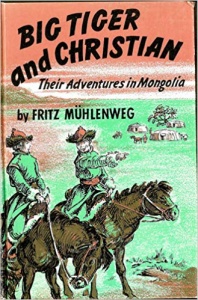Children’s Books from Germany
Listen to the Recess! Clip
| Author | Kevin Shortsleeve |
| Air Date | 5/19/2003 |

Children’s Books from Germany Transcript
In Germany, literature for children has a rich history. The first picture book, in fact, was the work of the German educational reformer Johan Comenius, who in 1658, published The Orbis Sensualium Pictus which roughly translated means A World of Things Obvious to the Senses. The book contained an illustrated alphabet expressed in terms of animals and sounds, and the introduction recommends that the book “be freely given to children, even at home before they are put to school.”
German children’s literature is best known, however, for fairy and folk tales. In 1477, an early printed version of Aesop’s Fables was produced. In the 1500s, legends of Dr. Faust and Reynard the Fox began to appear in print. And German authors, early on, took inspiration from folk tales and produced works like Rudolf Raspe’s 1734 release of The Adventures of Baron Munchausen or E.T.A. Hoffmann’s Nutcracker and the Mouse King, published in 1816.
Most famous of all German folk tales, however, is the collection that the Brothers Grimm began to publish in 1812. Among the more than 200 tales preserved by the brothers are such well-known stories as “The Frog Prince,” “Little Red Riding Hood,” “Rapunzel,” “Hansel and Gretel, “”The Bremen town Musicians,” “Snow White” and “Rumplestitskin,” to name but a few.
In the mid 1800s, writers like Heinrich Hoffmann and Wilhelm Busch began to release wild, dark and raucous collections of rhymes that pushed the envelope of what was considered acceptable reading for a young audience. And the German invention of color printing, by means of lithography, further enriched the world of German children’s literature.
In the 20th century, between the World Wars, German authors produced books like Bambi, published in 1923 by Felix Salten and Emil and the Detectives by Erich Kastner. Artists and many authors like Kastner, however, saw their books banned or even publicly burned by the Nazi regime, whose official policy for children’s literature reduced the list of books deemed appropriate for young readers to heroic war sagas and folk legends.
The later half of the 20th century saw the publication of many high-quality picture books as well as popular novels such as Fritz Muhlenweg’s Big Tiger and Christian, which has been described as one of the finest modern adventure stories of this century, and Michael Ende’s very popular, The Neverending Story, released in 1979.
Like Ende’s title, German children’s books remain vital and enormously interesting, and they show no signs of ending happily ever after any time soon!